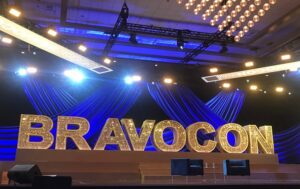By: Bennett Napier, CAE
Outside of having a strong membership base which is the life blood of any nonprofit, having an effective elected volunteer leadership team is crucial to the long term success of an organization.
In today’s association management environment, it is more common for volunteer board members to seek leadership opportunities that require less time for “ladder progression” to officer positions. In addition, volunteer leaders generally speaking, want to serve on a board where meetings are run efficiently (whether it be in person meetings or virtual – web and teleconference). Time is at a premium in today’s society, and association’s that have a format that does not respect or address the time expectations of leadership candidate’s risks losing potential talent.
From an operational standpoint, associations need to provide volunteer leadership candidates with a formal document which outlines:
– Financial expectations – such as (are their requirements for donating to the organization’s foundation if there is one); are expenses for travel and lodging reimbursable and to what extent; are their fundraising goals for recruiting members, meeting sponsors, and newsletter/magazine advertisers.
– Time commitment – How many mandatory board meetings are required annually? What are the expectations for serving on committees outside of board service? What is the duration of such meetings?
– Recruiting – To ensure long term continuity of vision, current board members are ambassadors to identify and recruit new leaders.
– Leadership approach/style – What is the leadership culture of the organization? What types of skill sets and industry/professional experience that are looked for in a volunteer leader?
Even when an organization has covered the basics and set expectations, the hard work bringing a team together. This can be challenging as individual leaders are seeking opportunities which enable them to “get in and get out” to get back home to their jobs and families. Given the focus on time, the format of meetings is extremely important.
To bring a group of individuals together and build a team takes effort. In this regard, it’s important to integrate activities which ensure the leaders learn about each other’s personalities; outside hobbies/passions and unique talents. This can be done through a “twenty questions” exercise that is shared as part of board orientation documents.
Further, when it can be done, building in “down time” in between the business portion of meetings is important. It can be something as simple as an offsite dinner before or after the business meeting. These events provide board members to see each other as people, which build rapport and collective understanding of perspectives.
These practices while elementary are just not done by many organizations. When they are not, associations can develop a stoic and monotonous leadership culture. This will affect both the ability to recruit new leaders and also could lead to current board member disengagement and overall effectiveness.
Drive a leadership culture that is focused, fun and brings the best out of volunteers.
Recommended Resource for Taking the Next Step, What Makes High-Performing Boards: Effective Governance Practices in Member-Serving Organizations, can be ordered online at
https://mystuff.asaecenter.org/ebusiness/publications/publicationproduct?id=107628






